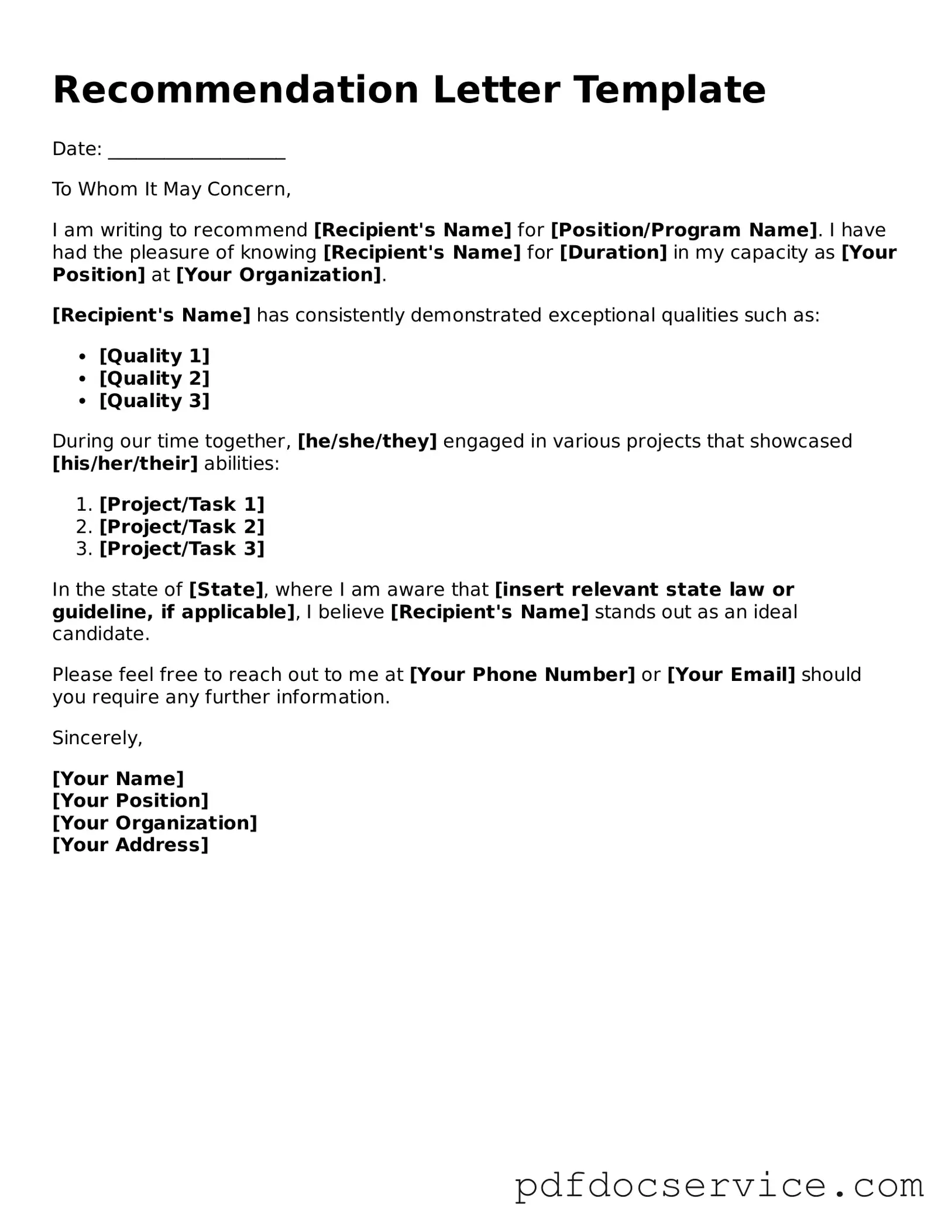Blank Recommendation Letter Form
A Recommendation Letter form is a document used to request a written endorsement from someone who can vouch for an individual's skills, character, and accomplishments. This form typically guides the recommender in providing relevant information that highlights the candidate's qualifications. Such letters play a crucial role in applications for jobs, academic programs, or other opportunities where personal endorsement is valued.
Open Recommendation Letter Editor
